In the ever-evolving world of digital communication, email marketing remains a cornerstone of customer engagement. Two giants in this arena, SendGrid and SparkPost (now Bird Email), have been vying for the top spot in email service provision. As businesses seek to optimize their email campaigns, understanding the nuances between these platforms becomes crucial.
This comprehensive comparison delves into the intricacies of SendGrid and SparkPost, exploring their features, strengths, and potential drawbacks. By examining these industry leaders side by side, we aim to provide clarity for businesses looking to make an informed decision on their email marketing infrastructure. Additionally, we’ll introduce an innovative alternative that’s reshaping the industry: Prism Reach.
Key Facts
- SendGrid offers a versatile platform for both transactional and marketing emails, while SparkPost specializes in transactional emails.
- SparkPost is renowned for its superior deliverability and speed, often delivering emails within seconds.
- SendGrid provides more comprehensive marketing features, including visual editors and automation tools, making it suitable for a wider range of email marketing needs.
- Prism Reach emerges as a cutting-edge AI-powered alternative, focusing on deep personalization for publishers and content creators.
- SendGrid offers seamless integration with major eCommerce platforms like Shopify, WooCommerce, and Magento.
- SparkPost is known for its advanced analytics and message stream capabilities, catering to more technical audiences.
SendGrid vs SparkPost: A Tale of Two Email Giants
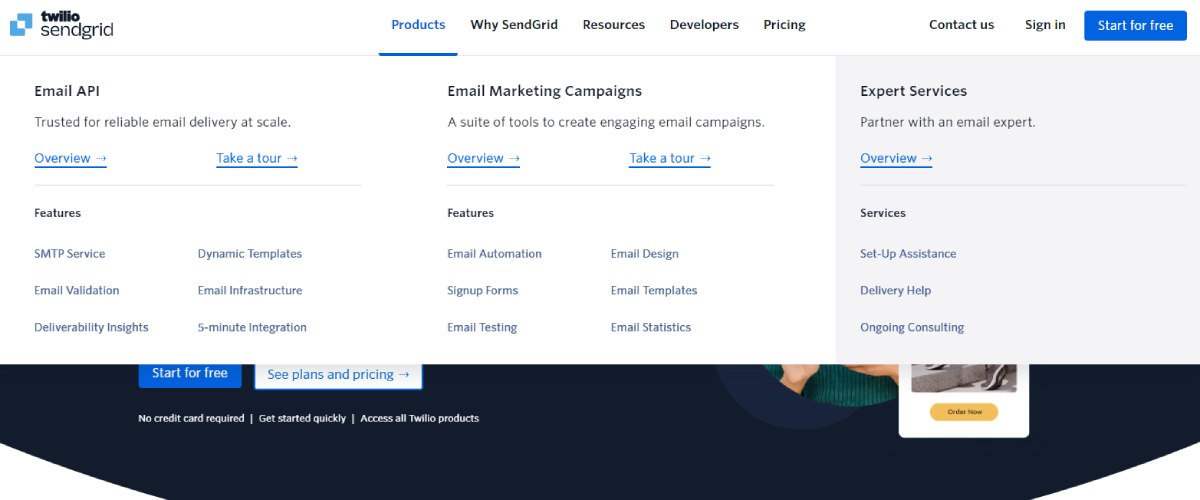
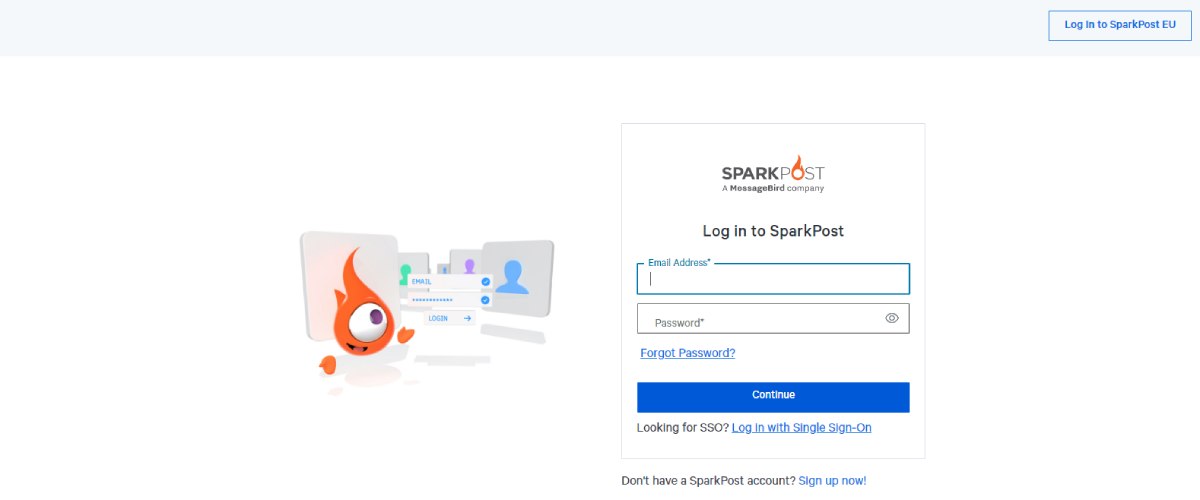
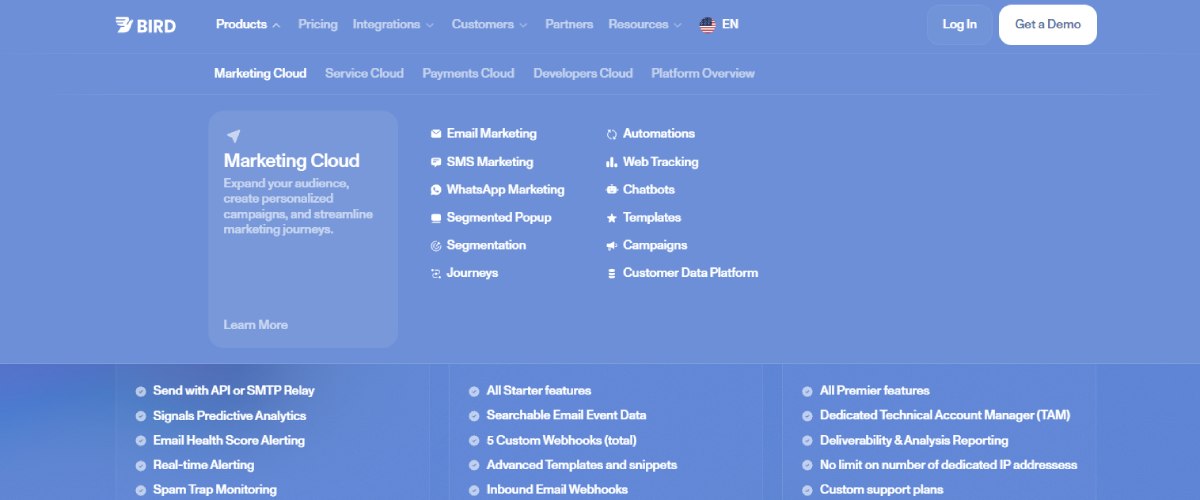
SendGrid: The Versatile All-in-One Solution
SendGrid offers a comprehensive platform for both marketing and transactional emails. Its feature-rich environment includes visual editors, pre-built templates, and user-friendly automation tools. The platform’s strength lies in its versatility, allowing businesses to manage multiple types of email communication from a single interface. SendGrid’s advanced customization options, such as dynamic content personalization and multi-variant testing, enable highly targeted campaigns. The platform also boasts robust API integration, making it developer-friendly.
However, this versatility comes with a steeper learning curve, especially for non-technical users. SendGrid’s pricing can be higher for businesses requiring dedicated servers, and some users report occasional deliverability issues with specific providers. Despite these challenges, SendGrid’s global infrastructure and wide integration options make it a popular choice for businesses seeking a comprehensive email solution.
SparkPost: The Transactional Email Specialist
SparkPost has carved out a niche by focusing exclusively on transactional emails, earning a reputation for superior deliverability and speed. The platform is designed to deliver emails within seconds, making it ideal for time-sensitive communications like password resets and order confirmations. SparkPost’s Message Streams allow you to separate transactional and marketing emails, ensuring that critical communications maintain high deliverability by not getting mixed with promotional content.
The platform offers unique features such as an email validation API and advanced analytics, including predictive analytics that can forecast potential issues before they impact your campaigns. SparkPost’s user interface is streamlined for monitoring email activity, though it lacks drag-and-drop editors for creating emails. While it doesn’t cater to marketing email needs, SparkPost’s focused approach results in high customer satisfaction ratings, especially among developers who appreciate its extensive API documentation and advanced troubleshooting capabilities. However, the platform’s specialized nature may limit its appeal to businesses seeking an all-in-one email solution.
User Interface and Automation Comparison
SendGrid and SparkPost offer different levels of complexity and user experience when it comes to their interfaces and automation capabilities. SendGrid’s user interface is designed to be accessible and intuitive, featuring drag-and-drop editors and a vast library of templates that simplify the email creation process. Its automation tools are robust, allowing users to set up complex workflows with ease. This makes SendGrid a suitable option for businesses that need both marketing and transactional email functionalities within a single platform.
In contrast, SparkPost‘s interface is more streamlined and focused solely on transactional emails. The lack of drag-and-drop editors means that email creation can be more technical, often requiring some knowledge of HTML or integration with external tools. However, for businesses that primarily rely on transactional emails, SparkPost’s streamlined interface can be an advantage, offering simplicity and efficiency without the added complexity of marketing features.
When it comes to automation, SendGrid offers a more extensive set of tools that cater to both marketing and transactional needs. Users can create sophisticated automation sequences that trigger based on a variety of conditions and user behaviors. SparkPost, on the other hand, offers automation features that are primarily geared towards transactional emails, ensuring that critical communications are delivered promptly and reliably.
Pricing Models and Accessibility
SendGrid and SparkPost have different pricing structures that reflect their target markets and feature sets. SendGrid offers a more flexible and scalable pricing model, which can accommodate businesses of all sizes. Its pricing starts with a free tier that allows for a limited number of emails per month, making it an attractive option for startups and small businesses. As your email volume grows, SendGrid’s pricing scales based on the number of emails sent, providing a predictable and transparent cost structure.
SparkPost’s pricing starts slightly higher, with plans beginning at $20 per month. However, SparkPost justifies the cost with its superior analytics and deliverability rates, making it a preferred choice for larger enterprises or companies with complex email needs. Their higher-tier enterprise plans can go up to $525 per month, reflecting the advanced features and support offered to high-volume senders.
Overall, SendGrid’s scalable and transparent pricing makes it a versatile choice for businesses with diverse email needs, whereas SparkPost’s specialized pricing is ideal for those that prioritize transactional email performance and deliverability.
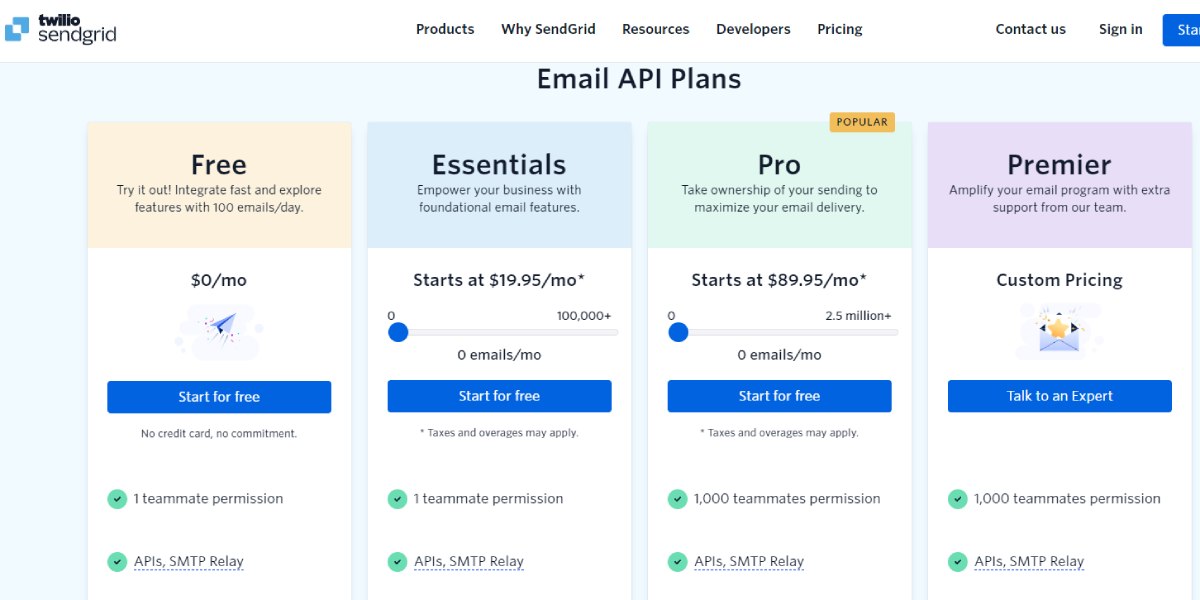
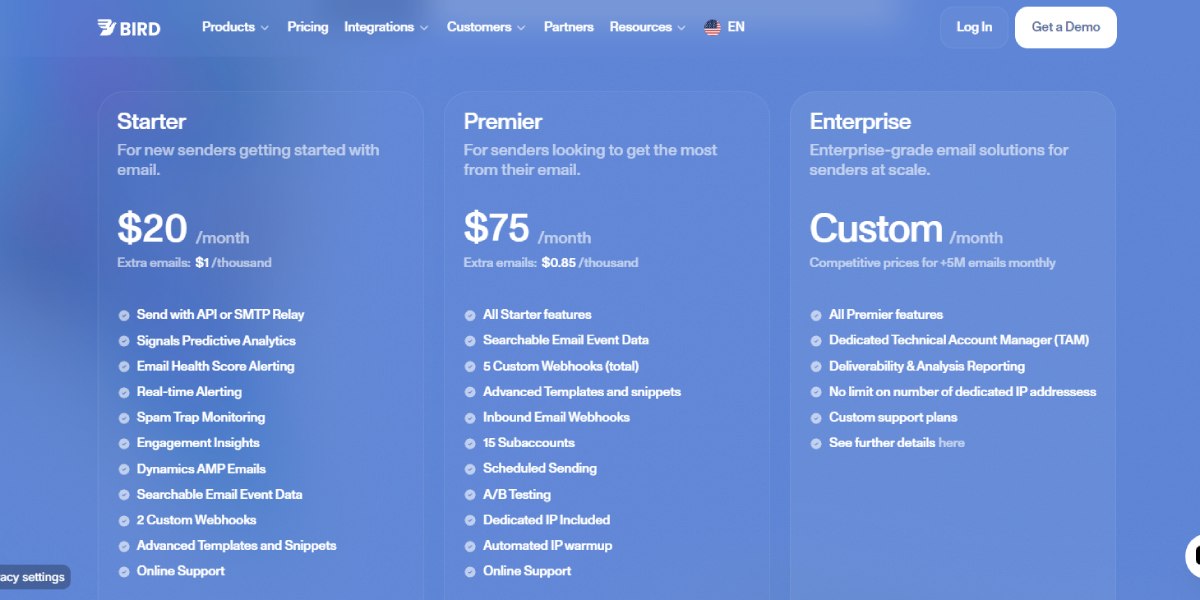
Integration Capabilities and Platform Support
SendGrid excels in its integration capabilities, offering seamless connections with major eCommerce platforms such as Shopify, WooCommerce, and Magento. This extensive integration ecosystem extends to a wide array of third-party tools via an open API, allowing businesses to create a highly customized marketing tech stack. SendGrid also supports real-time syncing and bi-directional integration with CRM tools, enhancing its utility for comprehensive customer relationship management. The platform’s social media marketing tools enable syncing with Facebook and Instagram for more targeted campaigns.
SparkPost’s integration strengths are primarily in its connection with ERP systems like NetSuite, reflecting its focus on larger enterprises. However, SparkPost also offers robust integrations with various eCommerce platforms and marketing tools, albeit with a focus on providing a unified customer data platform. This allows retailers to manage customer interactions more effectively across multiple channels, ensuring a consistent and personalized customer experience.
Hidden Gems: Strategies to Leverage SendGrid and SparkPost Effectively
While SendGrid and SparkPost offer robust email marketing features, integrating these lesser-known strategies can significantly enhance your email marketing success by focusing on features that enhance targeting, engagement, and conversion rates.
1. Utilize SendGrid’s Email Validation Tool
SendGrid offers an email validation feature that checks the validity of email addresses before sending. By validating emails, you can reduce bounce rates and improve overall deliverability, ensuring your messages reach the intended recipients.
Practical Tips:
- Integrate SendGrid’s email validation API into your sign-up forms to automatically validate email addresses in real-time.
- Regularly audit your email lists using the validation tool to maintain high-quality subscriber data.
- Combine email validation with double opt-in methods for maximum accuracy and engagement.
2. Leverage SparkPost’s Message Streams
SparkPost’s Message Streams allow you to separate transactional and marketing emails. This feature helps maintain high deliverability for critical transactional emails by ensuring they don’t get mixed with promotional content.
Practical Tips:
- Set up separate message streams for transactional and marketing emails to maintain clear deliverability standards.
- Customize settings within each stream to optimize deliverability based on the type of email being sent.
- Monitor performance metrics separately for each stream to identify and address specific issues effectively.
3. Implement A/B Testing in Both Platforms
While many users know about A/B testing, few fully utilize it. Both SendGrid and SparkPost allow you to A/B test subject lines, content, and send times, which can significantly enhance your campaign performance when done consistently.
Practical Tips:
- Regularly test different subject lines to determine which ones yield the highest open rates.
- Experiment with varying email content layouts and calls-to-action to identify what resonates best with your audience.
- Analyze the results of your A/B tests to refine your email marketing strategies continually.
4. Use Webhooks for Real-Time Event Tracking
Both SendGrid and SparkPost support webhooks that allow you to receive real-time notifications about email events (opens, clicks). Setting up webhooks can help you respond quickly to user interactions and optimize future communications.
Practical Tips:
- Configure webhooks to integrate with your CRM or analytics tools for seamless data flow.
- Use real-time event tracking to trigger personalized follow-up emails based on user actions.
- Monitor webhook data to identify and address deliverability issues promptly.
5. Utilize SparkPost’s Advanced Analytics
SparkPost provides detailed analytics, including predictive analytics that can forecast potential issues before they impact your campaigns. Regularly review these insights to refine your strategies.
Practical Tips:
- Leverage SparkPost’s predictive analytics to identify and mitigate deliverability issues proactively.
- Use detailed performance metrics to understand user engagement and optimize your email content accordingly.
- Integrate advanced analytics with your marketing automation to create more informed and effective campaigns.

Prism Reach: Enhancing Email Deliverability and Campaign Effectiveness
Addressing deliverability challenges requires a combination of best practices and advanced tools. Prism Reach, an innovative AI-powered SaaS solution, offers a comprehensive approach to enhancing email deliverability and overall campaign effectiveness through deep personalization and optimized sending practices.
Benefits of Prism Reach
- Enhanced Personalization: Prism Reach’s AI algorithms tailor email content to individual subscriber preferences, increasing engagement rates.
- Improved Deliverability: Advanced deliverability features ensure your emails land in inboxes, not spam folders.
- Seamless Integration: Easily integrates with existing systems, allowing for a smooth transition and enhanced email marketing capabilities without disrupting current workflows.
How Prism Reach Enhances Your Email Marketing
Prism Reach leverages artificial intelligence to analyze subscriber behavior and preferences, enabling highly personalized and relevant email content. This personalization not only enhances engagement but also improves sender reputation by ensuring that emails are anticipated and welcomed by recipients.
Additionally, Prism Reach’s optimal sending time feature uses predictive analytics to identify when each subscriber is most likely to engage with emails. Sending emails at these optimal times increases the chances of opening and interacting with the content, thereby boosting overall campaign effectiveness.
Prism Reach also integrates advanced deliverability features, including anti-spam checks, to proactively identify and mitigate potential spam triggers within your emails. By ensuring that your content adheres to best practices and avoids common spam filters, Prism Reach helps maintain a positive sender reputation and high inbox placement rates.
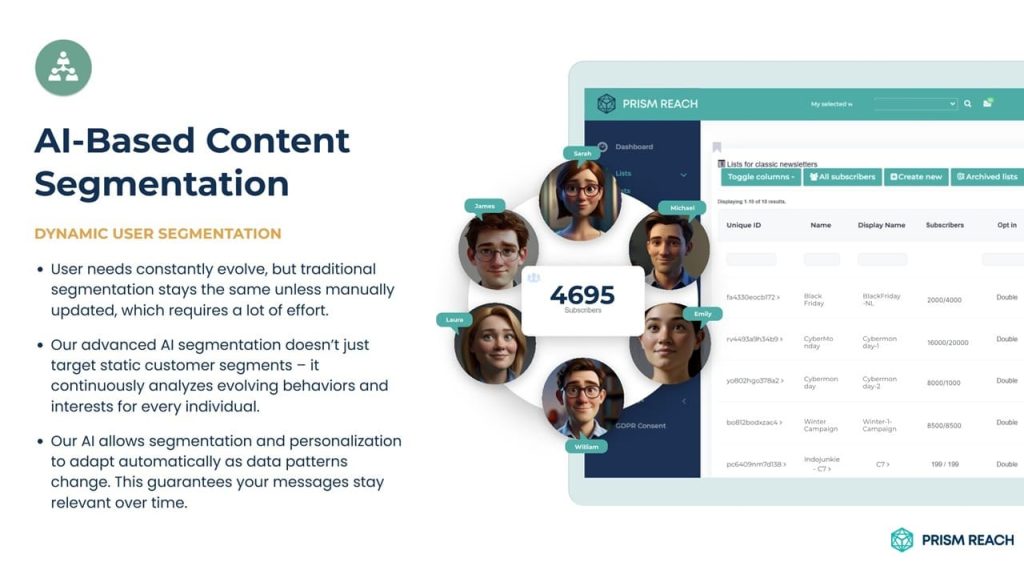
Prism Reach Features Addressing Deliverability Challenges
Prism Reach offers a suite of features specifically designed to tackle common email deliverability issues, ensuring that your campaigns reach their intended audience effectively.
- AI-Powered Personalization: Tailors email content based on detailed user avatars, enhancing relevance and engagement.
- Optimal Sending Times: Utilizes predictive analytics to send emails when subscribers are most likely to engage.
- Advanced Deliverability Features: Includes anti-spam checks and dynamic content selection to maximize inbox placement.
- Dynamic Content Selection: Automatically selects the most relevant content for each subscriber, reducing the risk of spam flags.
- Real-Time Engagement Metrics: Provides live updates on email performance, allowing for immediate adjustments to improve deliverability.
Practical Tips and Best Practices
Improving email deliverability is an ongoing process that requires attention to detail and adherence to best practices. Here are some actionable tips to enhance your email deliverability:
1. Maintain a Clean Email List
Regularly audit your email list to remove inactive or invalid email addresses. This reduces bounce rates and improves overall sender reputation.
Steps to Maintain a Clean List:
- Use double opt-in methods to ensure subscribers are genuinely interested.
- Remove hard bounces and inactive subscribers after a certain period.
- Implement re-engagement campaigns to win back dormant users.
2. Craft Relevant and Engaging Content
Ensure that your email content is relevant, valuable, and engaging to your audience. Personalized content based on subscriber behavior can significantly enhance engagement metrics.
Content Best Practices:
- Segment your audience based on demographics and behavior.
- Use dynamic content blocks to tailor messages to individual preferences.
- Include clear and compelling calls-to-action (CTAs) to drive engagement.
3. Optimize Email Design and Formatting
A well-designed email with clean formatting is more likely to be delivered successfully and engaged with by recipients. Avoid excessive use of images and ensure that your emails are mobile-friendly.
Design Tips:
- Use responsive design to ensure emails render well on all devices.
- Limit the use of large images and ensure they are properly optimized.
- Use clear headings, short paragraphs, and bullet points to enhance readability.
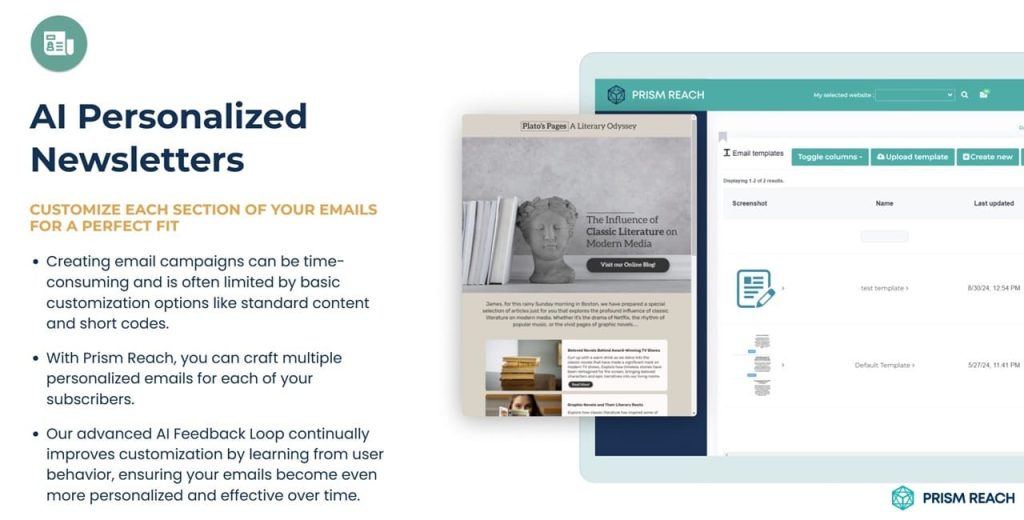
Prism Reach: The Future of Deliverability and Personalization
As email marketing continues to evolve, the importance of deliverability and personalization cannot be overstated. Prism Reach stands at the forefront of this evolution, offering a platform that not only addresses deliverability challenges but also enhances overall campaign effectiveness through advanced AI-driven features.
By leveraging Prism Reach, marketers can ensure that their emails not only reach their intended recipients but also resonate with them on a personal level. This dual focus on deliverability and personalization sets Prism Reach apart as a leading solution in the competitive email marketing landscape.
Call-to-Action
Don’t let email deliverability issues undermine your marketing efforts. Experience the power of AI-driven personalization and improved deliverability with Prism Reach. Visit our website today to learn more about how Prism Reach can transform your email campaigns and boost your engagement rates. Start your free trial now and see the difference for yourself!
Upgrade Your Email Marketing with AI Personalization!
Conclusion
While SendGrid stands out as a robust, versatile option for businesses requiring both marketing and transactional email capabilities, SparkPost’s specialized focus on transactional emails makes it an excellent choice for those prioritizing speed and deliverability for critical communications. However, with SparkPost’s specialized nature and SendGrid’s broader feature set, businesses must carefully assess their specific needs and goals to determine the best fit.
Prism Reach emerges as an innovative alternative, offering AI-powered personalization and advanced deliverability features that address some of the limitations of both SendGrid and SparkPost. Its ability to seamlessly integrate with existing systems, provide deep personalization, and enhance deliverability makes it a compelling choice for businesses looking to elevate their email marketing strategies without the added complexity.
As the digital marketing landscape continues to evolve, embracing innovative solutions like Prism Reach will be key to staying ahead in the competitive world of email marketing. By focusing on advanced personalization, optimal sending practices, and robust deliverability features, Prism Reach ensures that your email campaigns not only reach their intended audience but also engage and convert them effectively.
Sources